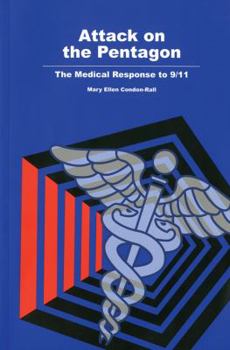Attack on the Pentagon: The Medical Response to 9/11
NOTE: NO FURTHER DISCOUNT FOR THIS PRINT PRODUCT- OVERSTOCK SALE - Significantly reduced list price
The narrative first focuses on the immediate medical response at the Pentagon, and the medical transition to recovery on the first day.
The story then moves to Army Medical Department headquarters in Falls Church, Virginia, and San Antonio, Texas, where Army Medical Command (MEDCOM) personnel monitored the response. Accounts of the Army's involvement in the recovery of deceased attack victims at the Pentagon and the work of the Armed Forces Institute of Pathology in identifying human remains at Dover Air Force Base follow. The roles of military and civilian hospital staffs and of military environmental health and mental health specialists in taking care of attack victims and their families are also examined.
Late in the volume, a chapter is included on New York City because military medical forces also responded to ground zero. The
telling of this story, mainly through the eyes of two MEDCOM officers detailed to New York to support National Guard troops guarding ground zero's perimeter, may provide valuable insights on how to respond to similar events in the future.
A theme that stands out in the telling of this story is that preparation and training paid off. When these attributes were weak or absent, responders encountered problems. In Washington, DC, and New York City, MEDCOM put into effect existing disaster response plans. As a result, military medical response needs, including supplies, were with few exceptions already in place. However, responders needed to learn how to use volunteers effectively and how to improve control of medical personnel, equipment, and supplies. (Contains some copyrighted material)





